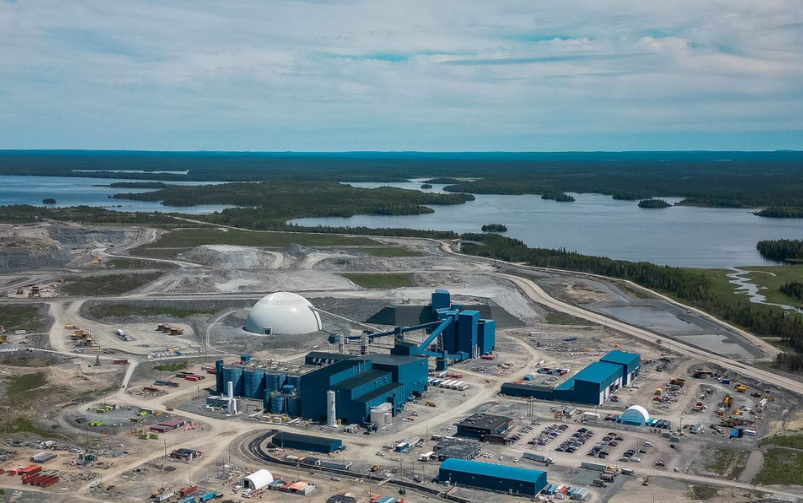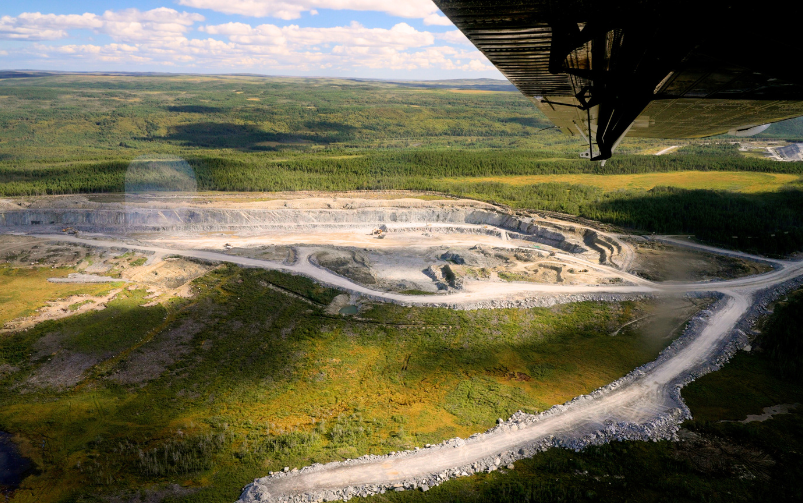Until this week, Nunavut was the only one of Canada’s three northern territories to not yet have control over its metal and mineral reserves. Courtesy of Isaac Demeester via Unsplashed.
Welcome back to your weekly mining news recap, where we catch you up on some of the news you may have missed. This week’s headlines include Teck Resources’ lower-than-expected annual production figures for copper and zinc, Samsung SDI’s new stake in Canada Nickel and BMI’s hopeful metals and mining predictions for the new year.
Kinterra Capital’s portfolio company, NiVolt Technologies Inc., announced the successful production of mixed hydroxide precipitate (MHP), which contained over 45 per cent nickel plus cobalt with low impurities. This recent update will allow Kinterra to progress conducting a feasibility study for a potential hydrometallurgical facility in Quebec. If constructed, the facility would convert nickel concentrate into MHP and nickel sulfate, which would then be used for the production of electric vehicle (EV) batteries.
On Jan.18, Canada gave the territory of Nunavut control over its public lands, freshwater and non-renewable resources, which include gold, diamond, iron, cobalt and rare earth metals reserves, as reported by Reuters. Alongside Nunavut Premier P.J. Akeeagok, Prime Minister Justin Trudeau signed an agreement in Iqaluit, the territory’s capital, allowing it the right to collect royalties from its mined resources, that would have previously been sent to the federal government. Up until now, Nunavut remained the sole northern territory without a devolution agreement.
A research paper published in Nature’s Communications Earth & Environment journal details what its authors believe was the primary cause of the failure of the tailings dam at Vale’s Córrego do Feijão iron ore mine in Brumadinho, Brazil in January 2019, as reported by Mining.com. The disaster caused at least 270 deaths and released 10 million cubic metres of liquified tailings. The research suggested that some initial slip surfaces had already appeared in the tailings during construction of the second of the upstream dam’s 10 steps, and they increased in length as construction progressed. Following the decommissioning of the dam in 2016, they continued to expand due to creep deformation, and when they reached critical length in 2019 this triggered the collapse of the entire dam. The findings could help identify risks at existing dams, according to the study authors.
Teck Resources reported lower-than-expected copper and zinc production for 2023, as reported by The Canadian Press. The company reported a total of 296,500 tonnes of copper production for 2023, lower than its guidance of between 320,000 and 365,000 tonnes. Teck stated that production was impacted by a slower ramp-up at its QB2 project in Chile, as well as a localized geotechnical fault at its Highland Valley Copper operations in B.C. back in August, which has since been stabilized. In addition, Teck’s zinc in concentrate production was 644,000 tonnes last year, just below its guidance range of between 645,000 and 685,000 tonnes for 2023; the company said that this was due to equipment failures at its Red Dog mine in Alaska as well as weather-related issues in the first quarter.
In order to the life of its two underground gold mining operations in Ontario, Alamos Gold is making considerable investments in exploration at both its Island Gold mine and Young-Davidson mine, as reported by Northern Ontario Business. Alamos Gold’s investment decision follows record annual production of 529,300 ounces of gold produced in 2023, a 15 per cent increase from the year before. With the company’s global exploration budget for this year set at US$62 million, the Island Gold mine will receive US$19 million and the Young-Davidson mine will receive US$12 million.
Korean battery and electronics manufacturing company Samsung SDI purchased an 8.7 per cent stake in Canada Nickel, as reported by Engineering News. The US$18.5 million investment has also granted Samsung SDI the right to acquire a 10 per cent equity interest in Canada Nickel’s Crawford nickel-cobalt sulfide project in Ontario for US$100.5 million following a final construction decision, which will also grant it certain offtake rights. This news follows Agnico Eagle’s recent investment in the junior nickel miner.
Canadian company Taseko Mines announced that it has made a deal with Taurus Mining Royalty Fund, which would see the company accelerate construction of its Florence copper mine in Arizona, as reported by Canadian Mining Journal. The deal, amounting to US$50 million, is for the sale of a 1.95 per cent gross-revenue royalty from the Florence copper mine, with the company noting that it expects to receive funding in early February pending closing conditions.
The McLeod Lake Indian Band has purchased a one per cent equity stake in Vancouver-based Defense Metals Corp., as reported by Business In Vancouver. Defense Metals’ Wicheeda project is a light rare earth elements deposit located roughly 80 kilometres northeast of Prince George, B.C. The Band now owns 2.6 million shares in the company. The Band also entered into a co-design agreement with the company, meaning it will play a significant role in the design and decision-making process of the Wicheeda project.
On Jan. 17, research agency BMI laid out its 2024 metals and mining forecast, noting that the sector should expect slightly higher metal prices in the new year compared to 2023, as reported by Engineering News. Its predictions remain optimistic for 2024, despite the recognition that a return to the high prices for metals seen in 2022 will likely not occur in the near future. It also predicted significant growth in critical minerals, with major economies continuing to introduce measures to boost domestic production.
With an increased demand for critical minerals across the globe and big ambitions for space expeditions, some mining companies are turning their attention to deep-sea and space mining as a way to keep up, wrote Alexandra Lopez-Pacheco in the December/January issue of CIM Magazine. While these untapped frontiers present significant hurdles, polymetallic nodules in certain areas of the ocean floors could hold as much as 33 per cent in metals content and 99 per cent usable minerals, while mining the Moon and asteroids could also present miners with an immense amount of water and high-grade mineral resources needed to build infrastructure for further space exploration.
Past CIM President Christopher Twigge-Molecey, who was in office from 2010 to 2011, passed away on January 8. Twigge-Molecey also served as President of CIM’s Metallurgy and Materials Society (MetSoc) from 1996 to 1997. He was the recipient of numerous prestigious awards, including the 2020 Vale Medal for Meritorious Contributions to Mining and the 2001 CIM Fellowship. On behalf of CIM, we send our sincerest condolences to his family and friends.
That’s all for this week. If you’ve got feedback, you can always reach us at editor@cim.org. If you’ve got something to add, why not join the conversation on our Facebook, Twitter, LinkedIn or Instagram pages?




